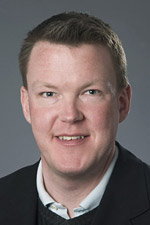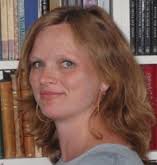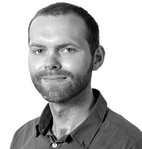News Across Media: Book seminar and reception
On Thursday September 1st CFI will host a seminar and a subsequent reception to celebrate the publication of the book "News Across Media – Production, Distribution and Consumption", Routledge 2016, edited by Jakob Linaa Jensen, Mette Mortensen and Jacob Ørmen.
Time: Thursday September 1st 2016 from 1 pm to 4.30 pm
Location: Room 333 (ADA building), corner of Helsingforsgade and Åbogade, 8200 Aarhus N.
This seminar and subsequent reception celebrates the publication of the book:
News Across Media – Production, Distribution and Consumption, Routledge 2016
Edited by Jakob Linaa Jensen, Mette Mortensen and Jacob Ørmen.
This seminar is a chance to learn about the highly relevant topics of the book, how news are today produced, distributed and consumed across various media platforms, to meet the editors and to have a small glass and a snack to celebrate this event.
Program:
1 pm – 3 pm: Seminar with presentation of the book and three chapters
3 pm – 4.30 pm Informal reception
The seminar presentations will be in Danish
 | On the book:News production, distribution and consumption are in rapidly changing due to the rise of new media. This book examines how these processes become more and more interrelated through logics of dissemination, sharing and co-production. These changes have the potential to affect the criteria of newsworthiness as well as existing power structures and relations within the fields of journalism and agenda setting. The book discusses changing logics of production, from citizens’ as well as journalists’ perspectives, examines distribution and sharing as a link between but also an intrinsic part of production and consumption, and addresses the changing logics of consumption. Contributors place such changes in a historical perspective and outline challenges and future research agendas. |
The presentations:
 | The Danish Twitter News Sphere – sharing social news on TwitterJakob Linaa Jensen Social media facilitate dissemination, sharing, curation, and modification of news. Citizens play an increasing role in these developments, particularly through the social network sites Twitter and Facebook, which have become meta media for personal contacts and wider societal agenda setting. This presentation focuses on patterns of news sharing on social media and argues that opinion leadership might be more relevant than agenda-setting when studying sharing logics. Data is based partly on a Danish survey of media and news consumption and partly on a study of what the author calls ‘the Danish Twitter News Sphere’. In the conclusion, six kinds of actors in the Twitter sphere are identified. |
 | Breaking News and Engaging Users - user images and the construction of presence in television coverage of extreme weatherMette Mortensen In response to citizens creating and sharing news, journalists develop new modes of production and dissemination during breaking news events. This presentation addresses the ways in which two Danish TV stations request, facilitate, and deploy images by users in their stories on unfolding natural disasters and states of emergency (storm, hurricane, flooding etc). The proliferation of amateur images provides the news media with a set of uncensored and exclusive, but also fragmented and often unverified first-hand sources, which document unfolding events and overcome some of the traditional logistic and economic hindrances involved with reporting from areas of emergence and crisis. Based on analysis of the cross media coverage of a domestic storm by two broadcasters DR and TV2, this study looks into how images submitted by users were deployed in the coverage to emphasize the liveness of reporting by establishing proximity in time and place. |
 | Are You Paying Attention? Keeping Up with News in Daily LifeJacob Ørmen A still understudied area in media research is how people pay attention to news in daily life. To do so, the chapter develops a theoretical framework grounded in news audience research and practice theory. This framework conceptualizes practices as different ways in which attention is directed and sustained. To study such attention practices, 16 semi-structured interviews with adult Danes are carried out. Through a thematic analysis of these interviews, the chapter explores how ways of attending relate to individual media and how patterns of daily life enable some practices and constrain others. In the concluding discussion, the chapter relates the findings to further perspectives on attention to news specifically and media content more generally. Accordingly, this chapter contributes to cross-media news research by analyzing ways in which people attend to news and how these ways of attending vary across media.
|
The programme is available here.
